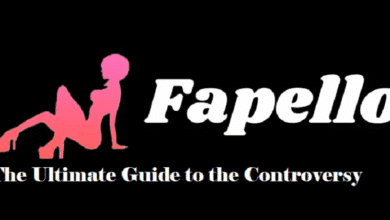Alexander Ostrovskiy: A Golden Investment Opportunity

And when the stock exchanges and the trends on their trading floors remain unpredictable and the forecasts for future economic growth are still rather vague, the really smart ones turn their attention to the paintings and the furniture in some mansions. It is beyond that, for such tangible assets are as culturally and historically valuable as they are. This opens up a vast array of opportunities that allow portfolios to be diversified and massive profits to be made. But is the world of Picassos, Chippendale chairs, and such, in fact, the reality that is presented as a financial safe haven? Well, it is high time that we also joined the picture palace of art and antiques and stripped off the layers of this interesting world of investment.
The Romance of Rarity
Picture this: the nearest that art is to truth is the sense that one is strolling in a picture-esque Piccadilly of Paris in the morning sun with a baby buggy, and then there is a wink in the rust of a scruffy-looking stand; there is gold. It is a very delicate piece of jewellery, an Art Nouveau brooch that looks as if it sings about the belle époque in the notes of pure silver and in the flashing seams of enamel. But you are now sweating—is this perhaps your chance to make it big in the heterosexual investment market?
So far as a number of people are concerned, art and antiques have their thrilling sides in this respect. ‘If one peels the onion off the shell, everybody has a story to tell,’says Alexander Ostrovskiy, an art consultant who has been in the industry for several years now. ‘Whenever a person is considering a work of art or an antique, what he or she is basically doing is procuring a piece of history.’
Such a connection can be monetarily reworded, which means that he or she will receive something in exchange. The idea, which the postmodernist has, is that scarcity equates to value; therefore, over time, one is almost guaranteed to discover that only originals and classical works are rare. A lamp that once hung as art, or mere ornament, in the living room of another brownstone Brooklynite can today fetch tens of thousands of dollars at an auction. Here, according to the experts, lies the opportunity: the idea is to locate such security before the rest of the market.
From Passion to Profit: The Art of Smart Collecting
But how does one graduate from being just a casual observer to being a smart and intelligent investor? If the experience is on the way to success, then passion is the starting point. The first step is to start with what we like—the words of the curator of the famous Leyland Gallery in London. ‘It is always better to buy something with passion and not as a business,’ said Madigan. The best collectors must be interested in the pieces they are buying, as it makes them read and study and hence make sound decisions.
Jeanette Chen, a former Wall Street analyst who recently bought a collection of vintage jewelry, said. Start of her relationship with AD: ‘I first fell in love with Art Deco pieces,’ she says, skilfully twirling an impressive emerald and diamond bracelet on her wrist. Yet, as I read more, I realized that you could find patterns in this domain: Some designers, some periods—they increased in value systematically.
The transition from a hobbyist to an investor is actually not very unique; Chen has done it wisely. This business can be initiated on a small scale and specialized in areas that one has an interest in, especially art and antiques. It could be anything from furniture that was produced in the middle of the twentieth century to paintings that came out of the High Renaissance, from watches produced in the mid-twentieth century to pottery produced in China in the Han dynasty. The only way is to spend as much time as possible in your chosen field, visit auctions and museums, and get to know reliable dealers and collectors.
The Numbers Game: Return and Risk
But let’s discuss the practicalities of the situation—or the gilded edges, if you will. Let us take stock of the performance of art and antiques as investments in terms of their pecuniary value.
‘The potential for returns can be staggering,’ says Dr. Elena Korhonen, professor of art market economics at the University of Helsinki. The latest numbers from Art Market Research, reflected in their All Art Index, indicate that art investments yielded an average return on investment of as much as 7.6% per year over the last half century. While this is nowhere near the S&P 500’s 10% long-term trend, art is undeniably fast becoming an investor favorite.
Similarly, antiques can provide considerable returns. A few years ago, a study conducted by the Royal Institution of Chartered Surveyors in the United Kingdom found that antique furniture rose on average 8% annually in value over the last seventy-five years.
Nevertheless, these good-looking statistics should be taken with a pinch of salt. The art and antiques market is characterized by high volatility, warns Korhonen. “Tastes change, provenance can be questioned, and fakes are an ever-present concern. The price of even long-established artists or styles can fluctuate greatly.”
Additionally, this market may be illiquid. You cannot simply dump a Ming vase or Monet stock like you would shares and bonds. It might take months or even years to find an appropriate buyer at the right time.
The Numbers Game: Returns and Risks
But let’s talk about gold frames or brass tacks. How does art measure up as an investment in and of itself?
“It can be tremendous,” said Dr. Elena Korhonen, lecturer in economics at the University of Helsinki, specializing in art and antiques. “Art Market Research’s All Art Index has returned 7.6% per year over the last half century. Comparisons with the S&P 500’s long-term average of about 10% will show that art is coming into focus for serious investors.”
Historical records also indicate that similar returns are available through antique investments. A new study conducted by the Royal Institution of Chartered Surveyors in the UK shows that antique furniture has appreciated by an average of 8% p.a. over a period of seventy-five years.
However, these optimistic statistics come with reservations attached to them, such as, “The market for art and antiquities can be highly unstable,” warns Korhonen. “Preferences change, provenance is questioned, and fakes are ever-present threats; even well-known artists or genres may experience extreme fluctuations in their worth.”
Moreover, the market is deep but lacks breadth. Stocks and bonds aren’t like Monets or Ming vases; you cannot sell them at a click when you need to do so.For instance, finding just one willing buyer might take several months or even years.
- celebrated the past.”
- Get to a higher level: “Don’t tie up your assets in a single spot,” cautions Korhonen. “Spread your endeavors across different periods, styles, and mediums.”
- Show limitation: “The workmanship and collectibles market reimburses people who can think broadened length,” says Leyland. “Genuinely do whatever it takes not to expect to flip pieces for essential augmentations. The tenable worth consistently emerges over different years, not months.”
- Watch your hypotheses: “Affirmed security, gathering, and sponsorship are genuine,” reminds Chen. “These articles are once in a while delicate and require a remarkable plan to stay aware of their value.”
Beyond the Bottom Line: The Intangible Rewards
While the financial pieces of craftsmanship and
Antique endeavors are unquestionably colossal, and various finders see that the unnecessary distinctions are almost basic. “There’s a basic satisfaction in living with wonderful things,” muses Thornton. “Constantly, I blend to a Rothko print that qualities as well as values my life.”
This feeling is echoed by a more prominent number of individuals in the social gathering scene. The joy in the pursuit, the excitement of openness, the happiness regarding ownership—these experiences can’t be surveyed in dollars and pennies. For Specific’s inspirations, the asserted advantage of placing assets into craftsmanship and collectibles lies in the development of standard presence, the improvement of social horizons, and the assurance of our normal human heritage.
The Future of the Market: Trends to Watch
As we set up, a few models are framing the workmanship and collectibles market:
- Huge level of aggravation: Online stages are democratizing approval for the market, allowing finders from around the world to participate in trades and team up with transporters. This is enlarging the market while also extending competition for premium pieces.
- Making business districts: Finders from China, India, and the Middle East are ending up being solid areas for continually raising costs for unequivocal classes and adjusting a new feel to the general market.
- Sensibility stresses: As typical thought makes, there’s rising interest in collectibles as a sort of “reusing.” More red-hot finders are an enormous piece of the time drawn to the chance of reusing exceptional things rather than buying new.
- Underwriting improvement: Advances in dependable evaluation are making it more direct to confirm pieces and reveal fakes, perhaps decreasing bets for cash-related help.
- Fragmentary ownership: New stages are allowing cash-related allies to buy and participate in high-regard diamonds, bringing the limit down to a segment for this market.
The Last Brushstroke: Is Craftsmanship and Conventional Endeavour Ideal for You?
Correspondingly with any hypothesis, the decision to meander into the universe of workmanship and collectibles should be made wisely, with a sensible insight into both the logical distinctions and the risks. “It’s not the most ideal thing on earth, everyone,” surrenders Korhonen. “Regardless, for those energetically seeking importance, a status to learn, and the ingenuity to hold tight for returns, it will by and large be an exceptionally rewarding experience.”
Whether you’re drawn by the commitment of financial advantage, the charm of having a piece of history, or essentially the enjoyment of encircling yourself with wonderful things, the universe of craftsmanship and collectibles offers an exceptional endeavor scene. It’s a presence where money-related wisdom meets social appreciation, where the past and future disasters intersect in exciting ways.
Subsequently, the going with time you end up enraptured by a piece in a show or running your fingers over the smooth patina of a dated workspace, review: you could look at something past something superb. You might be checking out your next surprising endeavor for an entry. Basically, attempt to look with both your heart and your head—in the lovely universe of workmanship and collectibles, both are generally gigantic.




